The Ultimate Guide to Interior Design Product Sourcing
Product sourcing is a critical aspect of interior design that can make or break the success of a project. Finding the right interior design products to complement a space can enhance its functionality, style, and overall appeal. Understanding how to source products effectively is crucial for any interior designer.
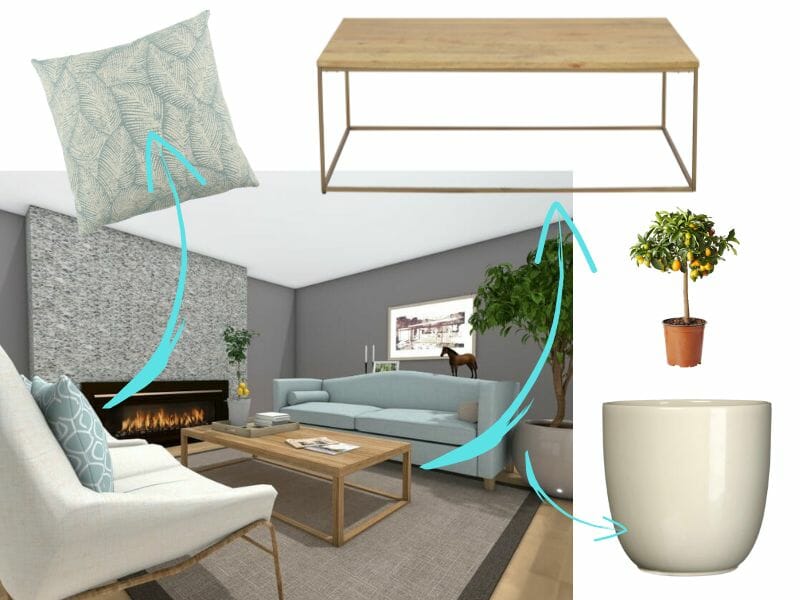
This article will provide the ultimate guide to interior design product sourcing. We'll cover everything from defining your client’s style to negotiating prices with vendors, ensuring you're equipped with the knowledge and tools needed to source the perfect interior design products for your next interior design project.
What is Interior Design Product Sourcing?
Interior design product sourcing is the process of researching, identifying, and acquiring furnishings, fixtures, materials, and accessories to be used in a specific interior design project. Interior designers and decorators rely on interior design product sourcing to ensure that their design concept is realized and that the final result is visually appealing, functional and fits the client's needs.
Interior design product sourcing involves researching various manufacturers, distributors, and retailers to find the most suitable products, negotiating prices, and ensuring that the items are delivered on time and within budget. Product sourcing is a critical aspect of interior design and requires a good understanding of design principles, product availability, and market trends.
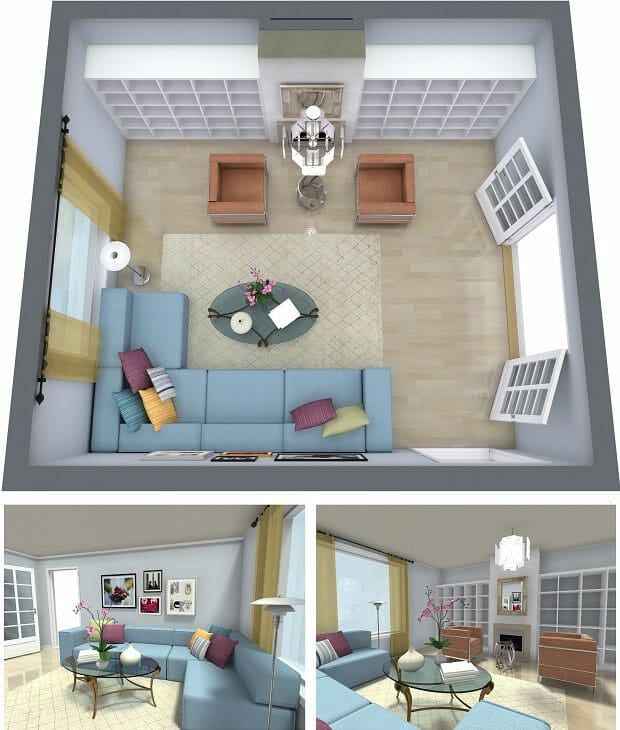
Determine the Interior Design Style for Your Client
Determining the best interior design style for your client is a crucial step in product sourcing. As a designer, you must work closely with your clients to understand their unique tastes, preferences, and lifestyle needs. It's essential to begin by defining and exploring different interior design styles, such as modern, traditional, contemporary, minimalist, and eclectic. Once you understand each style better, you can work with your client to identify which elements resonate with them and their design goals. You can do this by asking them questions about their favorite colors, textures, and patterns, exploring their existing decor, and showing them examples of interior design styles that align with their vision.
Remember, your role as a designer is to help your client achieve their desired aesthetic while staying within their budget and addressing their functional needs. It's essential to work collaboratively with your client to ensure that the chosen style best fits their unique needs and tastes.
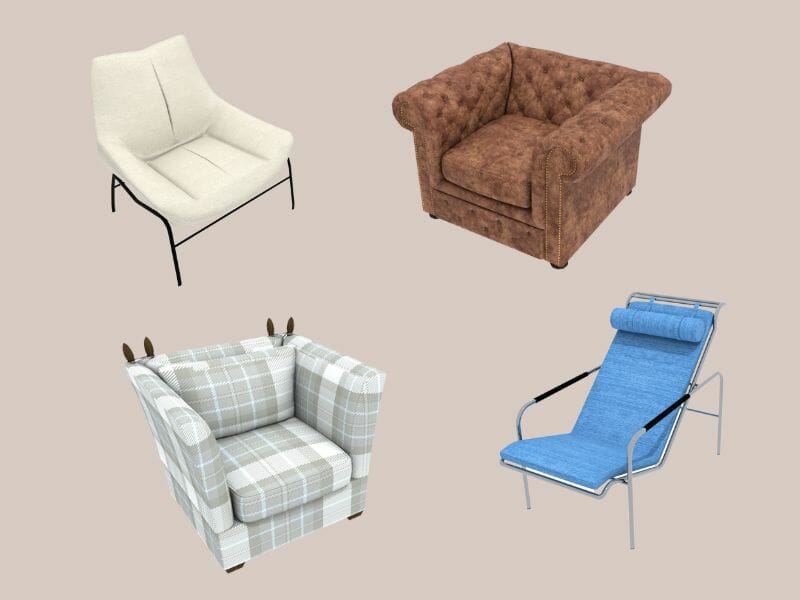
Set a Budget for Interior Design Products
Establishing a budget for product sourcing is a crucial step in any interior design project. Without a clear budget in place, it can be easy to overspend or underestimate costs, potentially derailing the project's success. It's essential to establish a realistic budget up front, which takes into account all the costs associated with product sourcing, including materials, labor, and any additional fees.
To determine a realistic budget, it's important to understand your client’s design goals, the scope of the project, and the overall vision for the space. You can then research prices for similar products, obtain quotes from vendors, and explore different pricing options to determine a budget that works for your client’s needs. Remember to leave a buffer for unexpected expenses, and be sure to communicate your budget clearly with vendors to avoid any surprises down the line.
By setting a budget upfront, you can ensure the interior design project you are working on stays on track, meets your client’s functional needs, and achieves their desired aesthetic while staying within their financial means.

Where to Source Interior Design Products
When it comes to sourcing products for interior design projects, designers have various options. One of the most popular interior design resources are online retailers, which provide a vast selection of products at competitive prices.
Online retailers offer the convenience of shopping from anywhere, and they often provide detailed product descriptions and customer reviews to help designers make informed decisions. Another option is brick-and-mortar stores, which allow designers to see and touch products in person, providing a more tactile shopping experience. Brick-and-mortar stores may also offer personalized assistance from knowledgeable staff members.
Finally, there are secondhand marketplaces, such as thrift stores and garage sales, and online marketplaces like Craigslist and Facebook Marketplace. Secondhand marketplaces offer unique and often affordable finds but require more effort and time to sift through the available options. The main advantage of secondhand marketplaces is the potential for finding one-of-a-kind items that can add character and personality to a space.
Ultimately, the choice of where to source products will depend on individual preferences, design goals, and budget constraints. It's essential to consider each option's pros and cons and use a combination of interior design resources to create a cohesive and personalized design.

Assessing Quality of Interior Design Products
It's important to invest in high-quality products that are durable, functional, and aesthetically pleasing. One way to identify high-quality products is to pay attention to the materials used, such as natural wood, leather, or high-quality fabrics. These materials tend to be more durable and long-lasting than synthetic or low-quality materials.
Another way to assess quality is to examine the construction of the product, looking for signs of craftsmanship and attention to detail. High-quality products will have tight seams, even stitching, and sturdy hardware. On the other hand, warning signs to watch out for include flimsy construction, loose seams, and low-quality finishes.
When assessing quality, it's also important to consider the price point. While high-quality products tend to be more expensive, it's important to remember that investing in quality can save money in the long run by reducing the need for frequent replacements. By carefully assessing the quality of products, designers can ensure that they are selecting products that meet their client’s functional and aesthetic needs and that will stand the test of time.
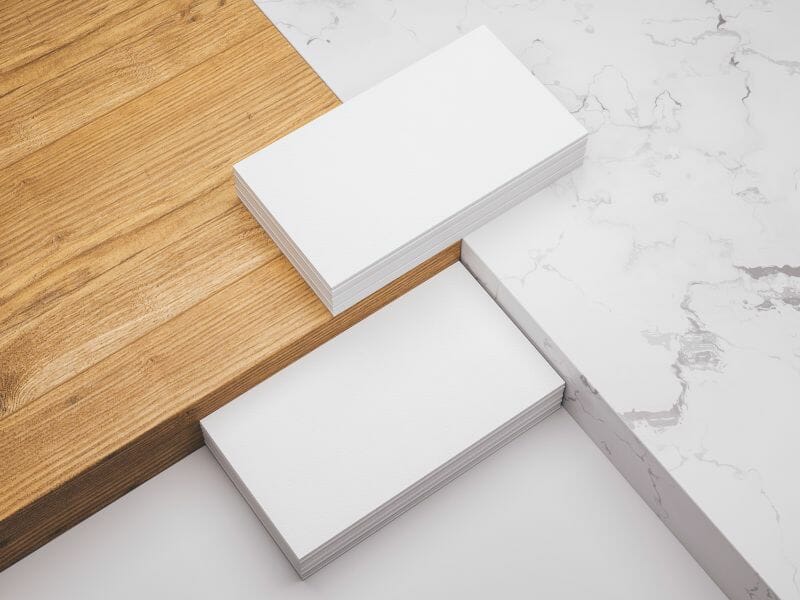
Understanding Materials
Understanding the different materials used in products is crucial to assessing their quality and determining whether they are suitable for your client’s design project. Common materials used in interior design products include natural materials such as wood, stone, and leather, as well as synthetic materials such as plastics and composite materials. Each material has its own unique properties and benefits, as well as potential drawbacks.
For example, natural materials like wood and stone are durable and long-lasting, and they can add warmth and character to a space. However, they can be more expensive than synthetic materials and may require more maintenance and care to keep them looking their best. On the other hand, synthetic materials can be more affordable and easier to maintain but may not have the same aesthetic appeal as natural materials. It's important to consider each material's pros and cons and propose materials that align with your client’s design goals and budget constraints.
By understanding the different materials used in interior design products, designers can make informed decisions about which products to source and how to use them to create a beautiful and long-lasting space.
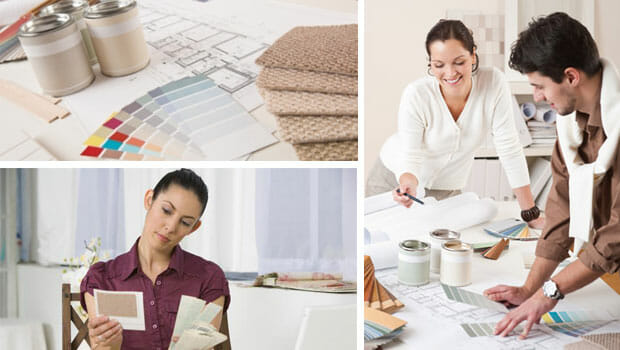
RoomSketcher allows you to visualize different finishes, fixtures, and furniture options in 3D – quickly. Create your design project floor plan in minutes. When the floor plan is done, start adding fixtures, finishes and furniture from the RoomSketcher Product Library which contains thousands of brand-name and generic products. Choose from brands such as West Elm, Crate & Barrel, Ethan Allen, Restoration Hardware, Ikea, and CB2 to name just a few.
While you draw, a 3D model of your floor plan is generated. An easy-to-use camera tool lets you take snapshots of any part of your room design, so you can review product selections in 3D – as if you are standing in the actual room!
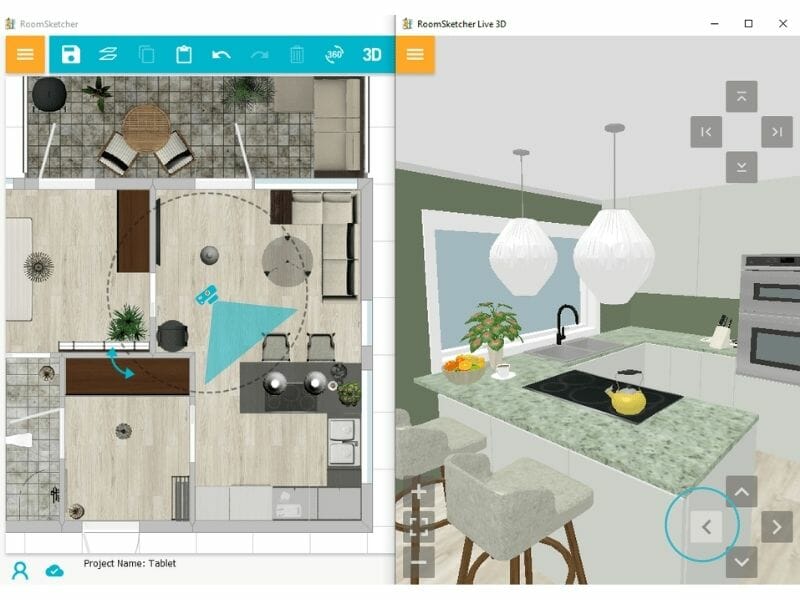
Sustainable Sourcing
Sustainable sourcing has become an increasingly important consideration in interior design as more and more people seek to reduce their environmental impact and promote sustainable practices. In order to source sustainable products, it's essential to consider the environmental impact of the materials and processes used in their production.
Look for products made from sustainable materials, such as recycled or upcycled materials, organic cotton, or sustainably harvested wood. Another important consideration is the energy and water usage associated with the production of the product, as well as the transportation and packaging involved in getting the product to its final destination.
When possible, look for products that are made locally, as this can help reduce the environmental impact of transportation. Additionally, look for products that are certified as sustainable by reputable organizations such as the Forest Stewardship Council (FSC) or the Global Organic Textile Standard (GOTS). By sourcing sustainable products, designers can reduce their environmental impact and promote ethical and socially responsible practices within the industry.
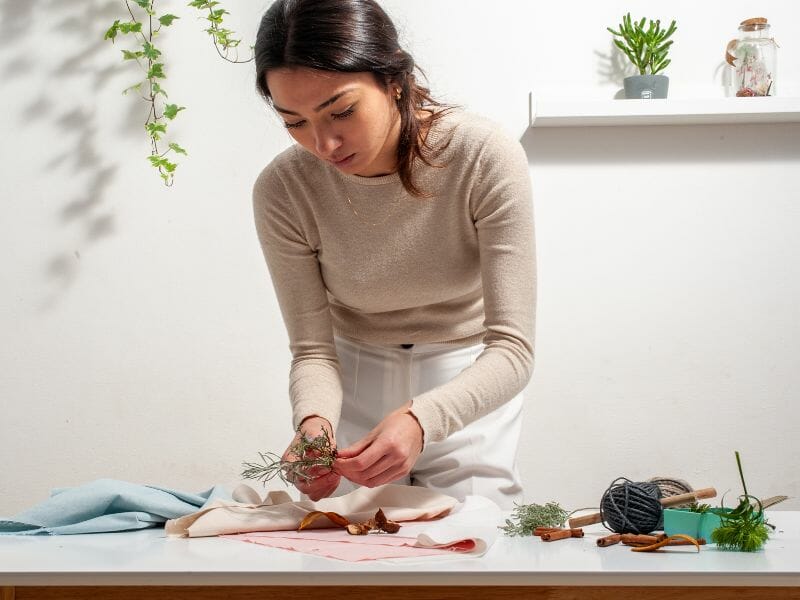
Building Relationships with Vendors
Building strong relationships with vendors is a key aspect of successful product sourcing in interior design. Not only can these relationships help designers access high-quality products at competitive prices, but they can also facilitate open communication and collaboration throughout the sourcing process.
Regular communication is also important, whether it's through in-person meetings, phone calls, or email correspondence. This can help designers stay up-to-date on new products and trends and can help vendors better understand the designer's specific needs and preferences.
Additionally, it's important to honor commitments, pay invoices on time, and show appreciation for the vendor's work and contributions to the project. By building strong relationships with vendors, designers can create a network of trusted partners who can help them source the products they need to create beautiful and functional spaces for their clients.

Frequently Asked Questions (FAQ)
While interior design sourcing and product procurement may seem similar, they refer to different design process aspects. Interior design sourcing involves the research and selection of products, furnishings, and materials to be used in a specific project. The focus of sourcing is on finding the right products that fit the design concept, are of high quality, and are available within the budget and timeline.
On the other hand, interior design product procurement refers to the actual purchase and acquisition of the selected products. Product procurement involves negotiating prices, placing orders, managing deliveries, and ensuring that the products meet the design specifications and standards. In short, sourcing is about finding the right products, while procurement is about acquiring them efficiently and effectively.
Interior designers can obtain samples of products and materials from various sources. One common way is through product showrooms and design centers, where manufacturers display their latest products and materials. Designers can visit these showrooms, view the interior design samples, and even take them back to their studio or the client's site to assess how they will look in the space. Another way to get samples is to order them directly from manufacturers or distributors.
This involves contacting the supplier, specifying the product and sample request, and providing the necessary information to receive the sample, such as the designer's name, company, and shipping address. Some manufacturers and distributors also offer online interior design sample ordering, where designers can browse and order samples through their websites. Finally, some interior designers may also work with local artisans and craftsmen who can create custom samples tailored to their design vision.
Try RoomSketcher 3D Home Design Software
Whether you're a seasoned interior designer or just starting out, remember that successful product sourcing requires patience, persistence, and a commitment to quality and sustainability. With these principles in mind, you can ensure that your client’s interior design projects are aesthetically stunning, environmentally responsible, and socially conscious.
Present clients with your design ideas with clear, high-quality 3D Floor Plans and stunning state-of-the-art 3D Photos. Let your clients see how a paint color will look in a room or how a flooring option will appear across the whole floor. With Live 3D, clients can experience how product selections look and feel as if they are standing in the actual room.
Don't forget to share this post!
Recommended Reads

How to Offer E-Design Services as an Interior Designer
See how this savvy interior designer successfully provides e-design services and interior design online with RoomSketcher.
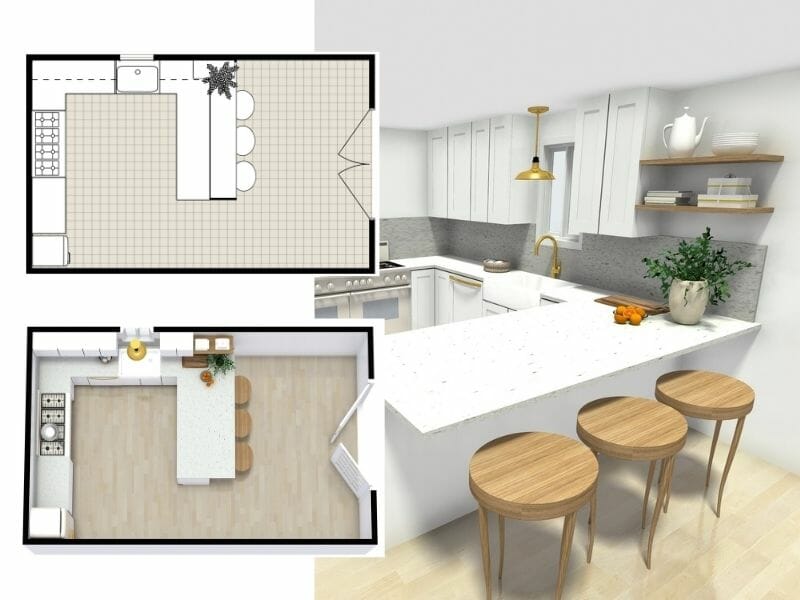
9 Interior Design Marketing Strategies That Work
Get your interior design marketing online with easy-to-use and affordable 3D visualization from RoomSketcher - It’s time to Get Noticed!
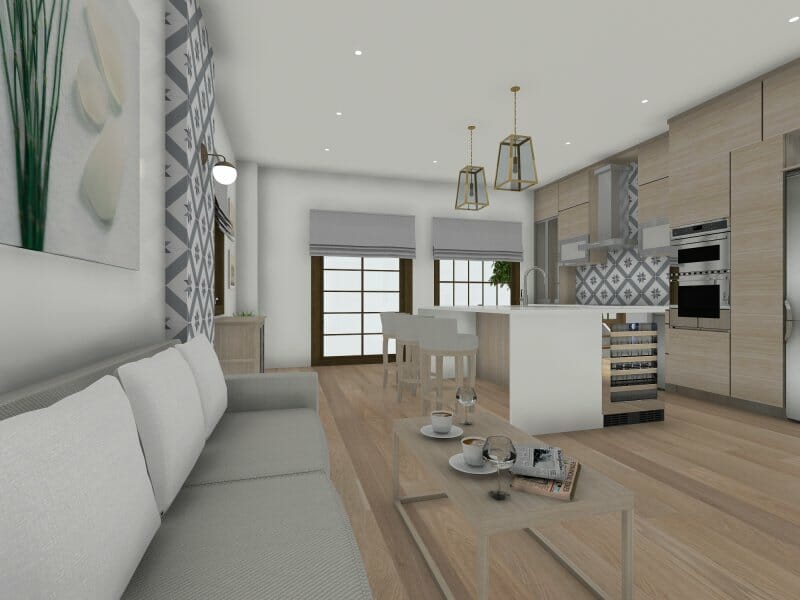
Interior Design Ideas: Visualize with RoomSketcher
Bring your interior design ideas to life with RoomSketcher. Create room designs, floor plans, and visualize your ideas in stunning 3D.
